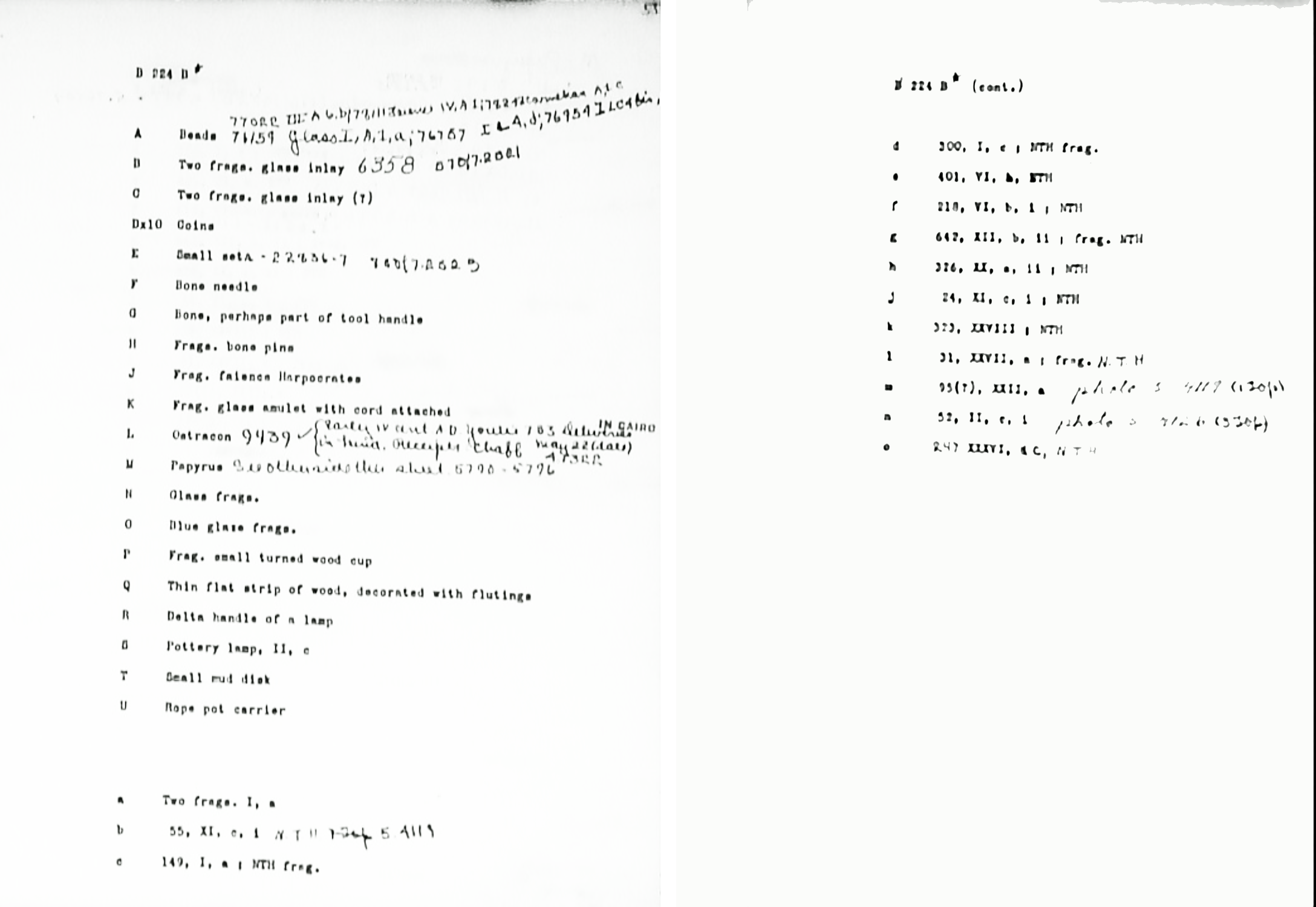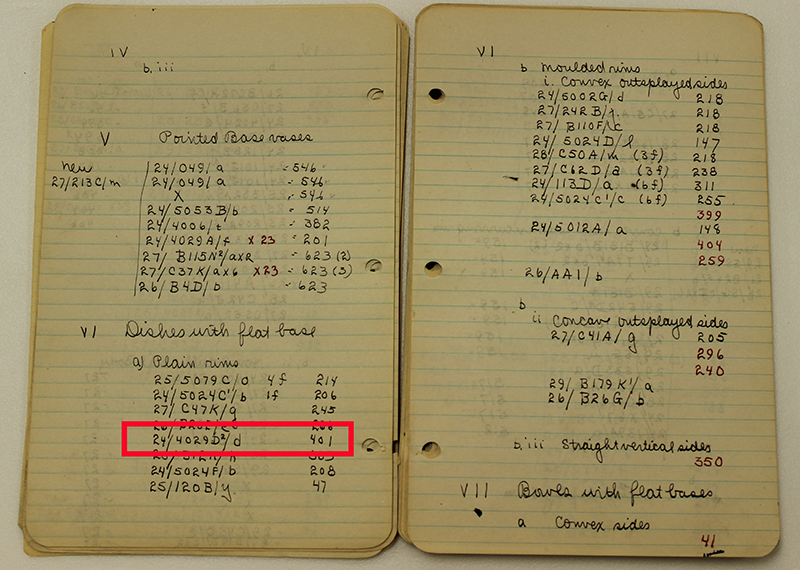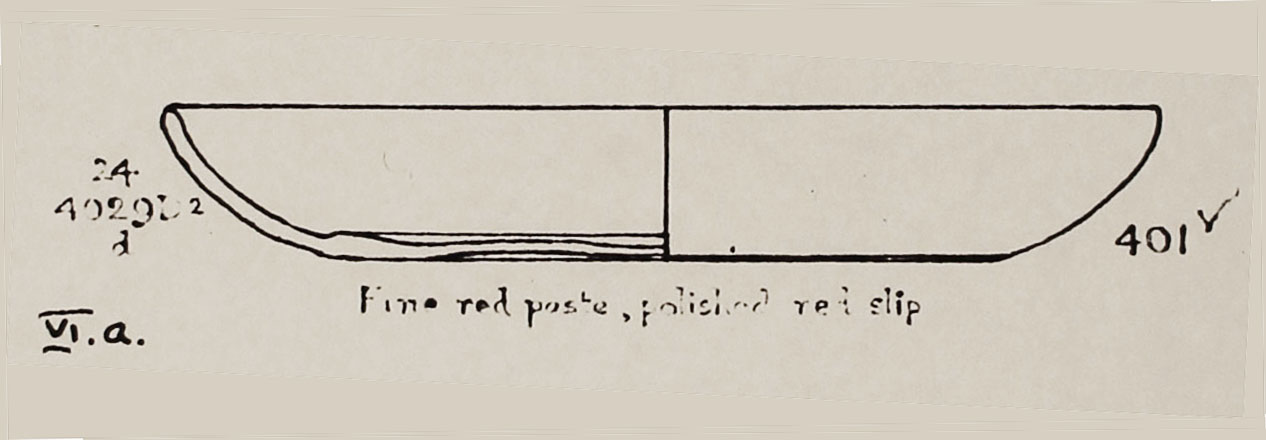Karanis Housing Project
the lost pottery key
During the first field season, the excavation team recovered an exceptional amount of pottery, both whole vessels and fragments. To better catalog the finds as they emerged from the soil, the Michigan team assigned arabic numbers to each kind of vessel.

In the list of objects shown above from building B224, ceramic objects are enumerated by lower case letters. In the column on the right, the second object from the top, e, is listed as "401 VI a NTH." Here, "401" indicates the vessel type. "NTH" stands for "Not Taken Home," meaning that the artifact was left in the field and not retained by the excavation team. At a later date, the Michigan team developed a typology, in which the vessels were grouped according to physical characteristics, such as type VI, "Dishes with flat base."

This basic typology was further expanded by characterizing other features of the vessels, such as rims or sides. For example, "VI a" describes dishes with a flat base ring with plain rims. Profile drawings illustrated each type. The profile drawing for type 401 is shown below. The drawing notes that the vessel was made of fine red paste, with a red slip.

As was the case with many objects from Karanis, the vessel of type 401 from Building 224 was not retained, although another example was, a similar dish with a flat foot from building 4029d2 that had been excavated in 1924. That vessel was taken back to Michigan and was accessioned into the collections as object 20975.
John Hayes characterized this vessel as African Red Slip Type 62B, dating it to the end of the fourth century, 350-425 CE. (Hayes, Late Roman Pottery, 109) The profile drawing from Hayes is shown below In Barbara Johnson's Pottery from Karanis, the vessel (catalogue number 213) was identifed as African Red Slip and dated to the fourth or fifth century CE.

The document that detailed the meaning of each type, that 401 indicated a bowl with a flat base, was forgotten in the archives. Barbara Johnson does not refer to the excavator assigned numbers, and the profile drawings created by the Michigan team were not used in either her publication or that of Hayes. I found this document in the archives and have shared it with ceramic specialists, including Thomas Landvatter (Reed College) and Nicholas Hudson (University of North Carolina - Wilmington. As part of the Books of Karanis project, head by C. Michael Sampson (University of Manitoba), Nicholas Hudson has been re-analyzing the ceramics from the site using the key. The results of his work will be incorporated into the data for the Karanis Housing Project.
Bibliography
Hayes, J. W. (1972). Late Roman pottery. London: British School at Rome.
Johnson, B. (1981). Pottery from Karanis: Excavations of the University of Michigan. Ann Arbor: University of Michigan.
Landvatter, T. (2014). "Karanis Findspots and Stratigraphy."" In T. G. Wilfong (ed.), Karanis Revealed (pp. 39-43). Ann Arbor: Kelsey Museum of Archaeology.